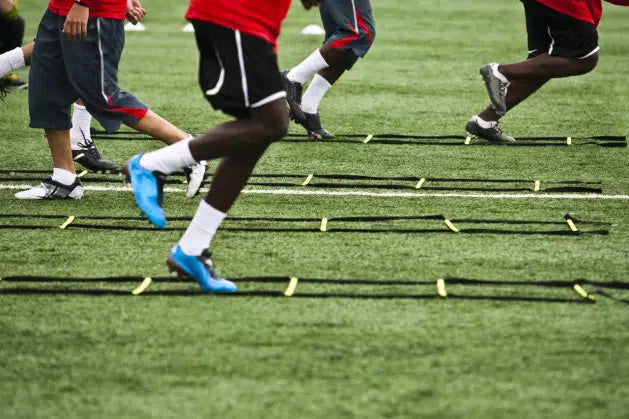If you are not testing, you are guessing – Patrick Nolan
-Patrick Nolan
When it comes to 1RM for clean, bench or squat, coaches are consistently testing their athletes. Yet shying away from testing linear or lateral speed. The most common reasons I hear from coaches; is lack of equipment, timing constraints and hassle of setting up equipment.
Regardless of the reasons, you are doing a disservice to your athletes by not testing their linear and lateral speed. Testing has come a long way from running 40s every other week. We are now able to test different metrics, allowing for multiple channels to track the athletes improvements or weaknesses during a training cycle. Regular testing of athletes assists coaches adjust programs to better serve the athletes. It is also creating an internal motivation for athletes and holding them accountable in their training cycle. Driven to excel, our athletes will be pushing to beat their yesterday and stay results focussed.
When it comes to the common complaint of timing constraints, this is easy to overcome with the assistance of easy to use systems such as Swift Performance gates. Whether you have 1 or 100 athletes, planning your session appropriately can allow testing to be done in a reasonable time and become a pivotal part of your training program. Breaking your athletes up into manageable group sizes and cycling them through different tests or the same test (this is what I do) both elimintates wasted time and keeps athletes training. For example, when I am testing large groups (up to 100 athletes), I will first break them up into four groups. Let’s say I am testing a flying 10 with this group. I will have one of the four groups running this test with Swift Performance gates whilst the other three groups run the same test untimed, then cycle each group through the testing station. This way I am only testing 25 athletes at a time, however will have the metrics on all 100 athletes by the end of the session. The athletes will also continue to be engaged throughout the entire session, each athlete having 4 sprints with one of these timed.
My next piece of advice when it comes to incorporating testing into your program, is to keep it consistent. At my facility, we will test our athletes across multiple test types. However we will consistently run our base tests with athletes, which consists of the same four drills. Those four drills we do at least monthly, and usually weekly. The drills we run outside of our base testing are not done as consistently however bring a change into the athletes program and allow us to check them against our base testing. This allows us to effectively manage and track performance of our athletes consistently and allows for different metrics when needed. Creating these tests that become pillars in your training will assist in your training programming and also allow your athletes to perform at their best without the “test day” stress that most athletes encounter when only a select few test days are run through out a season. When testing is a regular part of your training program, athletes become familiar with these tests and allows them to feel comfortable and consistently track their progress and take away from the pressure of needing to run a PB every test, as there is always next week.
This consistent testing much like before, internally motivates athletes to push harder and continue to improve their results.
If you are not testing, you are guessing. I highly encourage you to look at your program, think to yourself what tests will add the most value and then to create a consistent schedule of testing those select drills. Then watch your athletes continue to thrive.

Share:
Vertical jump test measures – a blog regarding how measuring vertical jumps could assist in tracking your progress.
A Curious Explanation of Weighted Jump Techniques